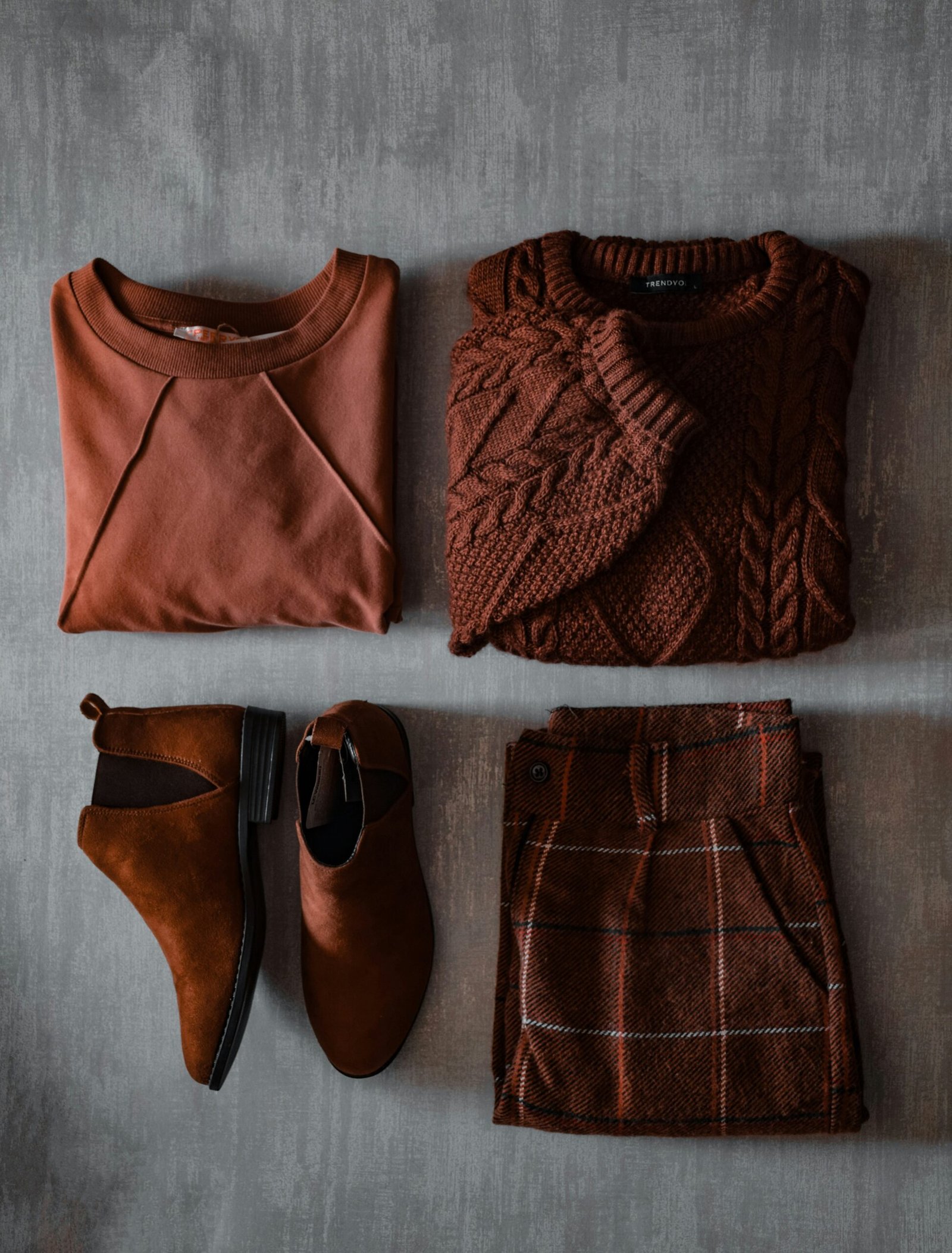Why Layering is Essential in Autumn
Autumn weather is famously unpredictable, often characterized by a wide range of temperature variations throughout the day. Mornings and evenings can be quite chilly, necessitating warmer gear, while mid-afternoons might bring a surprising surge of warmth that calls for lighter attire. The inherent variability in autumnal climate makes layering not just a stylish choice, but an essential one.
Layering outfits can help one adapt seamlessly to these changing conditions. By combining multiple layers, you can easily add or remove pieces to regulate your body temperature, ensuring consistent comfort. For instance, a lightweight shirt under a cozy sweater, paired with a versatile jacket, offers invaluable flexibility. You can shed the jacket and perhaps the sweater as the day warms, then bundle up again when temperatures dip.
Moreover, layering is a strategic way to extend the lifecycle of your spring and summer wardrobe. For those who enjoy their lighter garments, pairing them with autumn-appropriate knits, scarves, and jackets can breathe new life into these pieces. This could mean sporting a beloved summer dress over a long-sleeve shirt or layering a light, flowy blouse with a sturdy cardigan and matching scarf. Such creative combinations not only maximize the usability of your clothing but also offer a sustainable approach to seasonal dressing.
In addition to its practical benefits, layering significantly enhances personal style, adding depth and dimension to your outfits. The flexibility allows for endless mix-and-match possibilities, enabling you to showcase your fashion sense uniquely each day. Accessories such as belts, hats, and jewelry can further elevate these layered outfits, adding a touch of individual flair. In essence, layering transforms a simple ensemble into a chic, dynamic look that is both functional and fashionable.
Ultimately, embracing layering during the autumn months ensures that you stay comfortable, stylish, and adaptable, ready to face the season’s unpredictable temperature swings with ease and elegance.
Key Pieces for Effective Layering
As the weather transitions from summer to autumn, having essential wardrobe items is crucial for effective layering. One of the foundational pieces for autumn wear is the lightweight base layer. Long-sleeve tees and turtlenecks made from breathable materials like cotton and synthetic blends offer both comfort and flexibility. These materials allow for sufficient insulation while ensuring you don’t overheat when temperatures fluctuate.
For mid-layers, garments such as cardigans and vests are invaluable. Wool and synthetic blends are ideal choices as they provide excellent heat retention and moisture-wicking capabilities. A well-fitted cardigan can be easily layered over a base layer, offering an additional barrier against the cold, while a functional vest can add warmth without restricting movement.
The outer layer is perhaps the most critical component of autumn layering. Lighter jackets, such as denim jackets and bomber jackets, are versatile options that can be effortlessly combined with other layers. These items not only provide protection against brisk winds but also contribute to a stylish autumn look. When selecting outer layers, focus on finding pieces that offer a good balance between durability and comfort. Look for jackets that allow room for layering underneath without appearing bulky.
Additionally, accessories play a significant role in completing an effective autumn wardrobe. Scarves, hats, and gloves are excellent for adding both warmth and a touch of personal style. Scarves made from wool or cashmere can be wrapped around the neck for added insulation, while knitted hats and gloves can keep extremities warm.
When choosing pieces for layering, always consider fit and fabric quality. Ensuring each layer fits well under the next without causing discomfort is key. Materials that wick moisture away while providing insulation are optimal choices. Thoughtful selection of these wardrobe essentials can significantly enhance both your comfort and style as the autumn season progresses.
Styling Tips for Perfect Layers
Creating a layered outfit that is both functional and fashionable can seem daunting, but with a few key techniques, you can effortlessly master the art of layering for the changing autumn weather. One fundamental aspect is balancing proportions. When layering, it’s essential to combine fitted and oversized pieces thoughtfully. For example, a fitted turtleneck can serve as an excellent base layer under an oversized cardigan or a loose, chunky knit sweater. This contrast in fit helps create a balanced silhouette without overwhelming your frame.
Color coordination is another vital component of effective layering. To achieve a cohesive look, consider sticking to a monochromatic color scheme or analogous colors—those that sit next to each other on the color wheel. This approach ensures that even when multiple layers are involved, the outfit remains visually unified. For a more adventurous approach, try incorporating one statement color or pattern amidst neutral tones to add a pop of color or interest without overcomplicating the ensemble.
Mixing textures is also crucial for adding depth and visual intrigue to your layers. Pairing contrasting materials like a chunky knit sweater with a sleek leather jacket can create a striking and stylish appearance. The soft, voluminous texture of the knit juxtaposed against the structured, shiny leather introduces an eye-catching dynamic that elevates the overall look. Introducing various fabrics, such as wool, cotton, and silk, further enhances this textural interplay.
One common concern with layering is the potential for added bulkiness. To avoid this, start with thin, breathable layers closest to the skin. Materials like thermal shirts, silk camisoles, or lightweight cotton tops serve as excellent base layers that provide warmth without adding noticeable bulk. As you build your outfit, gradually incorporate thicker and more structured pieces, ensuring comfort and mobility are not compromised.
Looking to current fashion trends can provide endless inspiration for layering. Runway shows and fashion magazines often showcase innovative layering techniques, offering a wealth of ideas you can adapt to your personal style. By carefully considering proportions, color coordination, and texture, you can create layered outfits that are not only practical for the season but also exude effortless style.
Sustainable Layering: Combining Style with Eco-Friendly Choices
The increasing emphasis on sustainability in fashion aligns seamlessly with the concept of layering—offering not just warmth and style but also a practical approach to an eco-friendly wardrobe. One of the most effective ways to champion sustainable fashion is by investing in high-quality, versatile pieces. High-quality clothing not only lasts longer but also reduces the frequency of needing to purchase new items, thus contributing to less waste.
Selecting timeless items that transition effortlessly across seasons plays a crucial role in sustainable styling. Think of classic cardigans, cozy wool sweaters, and stylish yet functional trench coats. These items can be layered intuitively to match varying weather patterns and can be reimagined in countless ways, ensuring that they never fall out of style.
Furthermore, the fabric of our clothing plays a significant role in sustainability. Opting for pieces made from eco-friendly materials like organic cotton, recycled polyester, bamboo, and hemp not only helps reduce the environmental footprint of your wardrobe but also supports brands committed to ethical practices. Renowned labels such as Patagonia, Stella McCartney, and Everlane are leading the way by adopting sustainable production methods and transparent supply chains.
In addition to purchasing new, sustainability can also be achieved by repurposing and re-styling your existing wardrobe. Before discarding any garment, consider how it can be layered differently or upcycled into something new. For instance, an old wool scarf can become a chic winter accessory, or a worn-out turtleneck can be refreshed with a statement brooch or layered intelligently under a slip dress.
Making mindful purchases also underscores sustainable fashion. Before acquiring new clothes, consider their longevity and versatility. Ask yourself if the item can be paired with multiple pieces in your wardrobe and if it will serve you through various seasons and trends. This thoughtful approach to buying not only enhances your style but also perpetuates a more sustainable wardrobe.
Through conscious decisions and a shift towards investing in quality, timeless pieces, embracing eco-friendly materials, and reimagining existing wardrobe staples, sustainable layering emerges as both a chic and responsible fashion choice for the changing weather.


